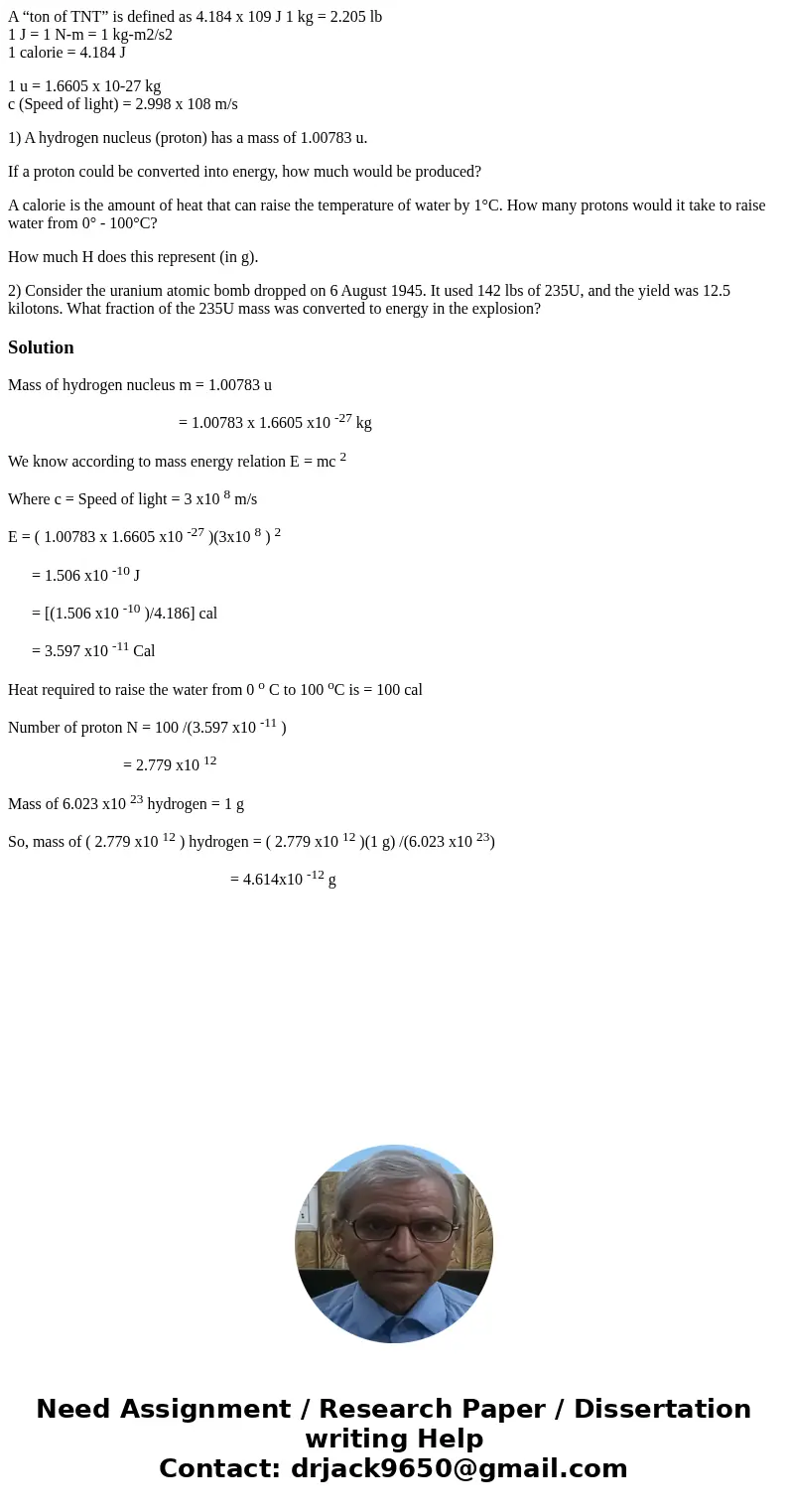A ton of TNT is defined as 4184 x 109 J 1 kg 2205 lb 1 J 1
A “ton of TNT” is defined as 4.184 x 109 J 1 kg = 2.205 lb
1 J = 1 N-m = 1 kg-m2/s2
1 calorie = 4.184 J
1 u = 1.6605 x 10-27 kg
c (Speed of light) = 2.998 x 108 m/s
1) A hydrogen nucleus (proton) has a mass of 1.00783 u.
If a proton could be converted into energy, how much would be produced?
A calorie is the amount of heat that can raise the temperature of water by 1°C. How many protons would it take to raise water from 0° - 100°C?
How much H does this represent (in g).
2) Consider the uranium atomic bomb dropped on 6 August 1945. It used 142 lbs of 235U, and the yield was 12.5 kilotons. What fraction of the 235U mass was converted to energy in the explosion?
Solution
Mass of hydrogen nucleus m = 1.00783 u
= 1.00783 x 1.6605 x10 -27 kg
We know according to mass energy relation E = mc 2
Where c = Speed of light = 3 x10 8 m/s
E = ( 1.00783 x 1.6605 x10 -27 )(3x10 8 ) 2
= 1.506 x10 -10 J
= [(1.506 x10 -10 )/4.186] cal
= 3.597 x10 -11 Cal
Heat required to raise the water from 0 o C to 100 oC is = 100 cal
Number of proton N = 100 /(3.597 x10 -11 )
= 2.779 x10 12
Mass of 6.023 x10 23 hydrogen = 1 g
So, mass of ( 2.779 x10 12 ) hydrogen = ( 2.779 x10 12 )(1 g) /(6.023 x10 23)
= 4.614x10 -12 g

 Homework Sourse
Homework Sourse